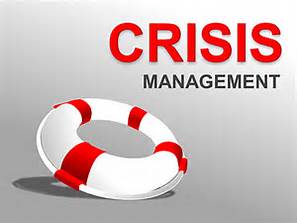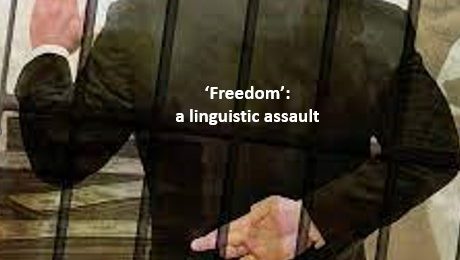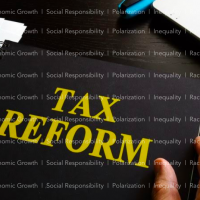
If there is one unfortunate corporate theme for defining the first 16 years of this Century, it may well be corporate greed, negligence and malfeasance[1]. Many of the biggest corporate scandals in history happened during this time period, including: Enron (2001), HIH Insurance (2001), WorldCom (2002), Freddie Mac mortgage scandal (2003), AIG accounting scandal (2005), Lehman Brothers investment bank and subprime mortgage crisis (2008), Libor (London Interbank Offered Rate) fixing scandal and Barclays Bank (2012), Volkswagen DieselGate (2015), as well as the 2008 credit markets’ disintegration that cascaded into the global financial meltdown that significantly threatened global capitalism.
With respect to the 2008 financial disaster, when asked “should somebody have gone to jail”, former U.S. Federal Reserve Chair Ben Bernanke famously said “Yeah, I think so”, stating that there should have been “more accountability at the individual level”. The 2008 disaster required “massive government bailouts and emergency stimulus programs” to “stabilize the system” – but “only after many lost their jobs and wellbeing”.[2]
It is during these type of corporate scandals, that the impacted company’s leadership and their lawyers need to be at their best to protect the company, its brand and reputation, its shareholders, and its customers.
Crisis management is the process to help an organization deal with a sudden and significant negative event that threatens to have harmful consequences to people or property, operations, reputation, and/or the company’s financial ‘bottom line’ if not handled properly.[3]
Don’t wait until you’re in a crisis to come up with a crisis plan.
– Phil McGraw
Before a crisis takes place, every company should be aware of how a crisis or disaster may impact their employees, customers, shareholders (if a public company), suppliers, the general public, and the company’s value. Most large organizations have an overall Crisis or Disaster Management Plan already in place, but this is simply a set of general procedures that will be applied in handling, containment, and resolution of an emergency in planned and coordinated steps. It includes clear roles and responsibilities and process related requirements company wide.
If you are a corporate executive, you need to make crisis preparedness and crisis management an integral part of your business planning.
– Rich Klein of LawFirmsPR
The ‘structure’ to coordinate a response to a crisis should already be in place for the company, however, the actual ‘strategy’ to be employed and implemented will depend upon the actual crisis that ultimately arises.
The focus of this article is on the type of strategy required to deal with a crisis or threat once it has arisen, with the assumption that the corporation in the crisis management scenario has been involved in inappropriate corporate malfeasance (for example, Volkswagen’s 2015 “DieselGate” scandal). This is what some experts refer to as a “core violation”, a breach of a matter that is “central to a company’s product, service and mission”. These type of company violations “pose a fundamental threat to the organization.[4]
If this type of crisis – the most difficult faced by any organization – is not handled appropriately, the very existence of the company may be at stake. By way of example, in 2001 Arthur Anderson – at that time a ‘Big Five’ international accounting firm with over 85,000 employees – handled a crisis facing their organization so poorly that it ended with its dissolution because of the damage to its name and reputation. Arthur Anderson was the external accounting firm for Enron[5], at that time the sixth largest company in the United States. Enron’s internal fraudulent activities (by its CEO and key executives) lead to its shareholders losing $74 billion, and its employees losing their pensions worth billions of dollars. Although only a small number of Arthur Anderson’s employees were associated with the scandal, Arthur Anderson as an international accounting organization collapsed and all of its 85,000 employees lost their jobs.
Then the shit hit the fan.
– John Kenneth Galbraith, A Life in Our Times
Lawyers assisting their corporate clients in a crisis management situation must understand that the client is the corporation, and not individual corporate executives. These lawyers must have the skillset required to identify, assess, understand, cope, and recommend a strategy that appropriately addresses the threat or threats to the organization in ‘real time’.
The credibility and reputation of a company is heavily influenced by the perception of the company’s timely and appropriate response during the crisis situation.
Where there is corporate malfeasance, the strategy for corporate protection and necessary rehabilitation must be implemented in a manner that the message is not lost to its audience, or appear to lack sincerity or regret.
Tell it early, tell it all, tell it yourself.
– former President Bill Clinton’s crisis management strategy
The recommendation and implementation of any particular strategy or step for a company in a crisis situation will depend on the facts of the particular legal situation, the relevant laws, and legal opinion. Having said that, big picture, to appropriately represent a company and protect its ‘brand’ and reputation, market value, and stakeholders in this type of ‘corporate malfeasance’ crisis management scenario, you should consider – at minimum – the following strategic steps:[6]
- 3 A’s: Acknowledgment, Apology and Admission – Get in front of the story and own it early. Show a human face, preferably a senior leader within the company. The apology must be sincere and transparent. Take responsibility (which is not the same as admitting liability). There will be no forgiveness without this step. Be honest and open, explain what has happened, and the steps being taken to address it. Do it quickly and fully. Failure to do so will generate increased negative media and timeline.[7]
- Communication – Stay in the driver’s seat. Be accessible and available to professional and social media, stakeholders and customers (communicate, communicate, communicate).[8] [per Bill Clinton as referenced above – “Tell it early, tell it all, tell it yourself”].
- Good Corporate Citizen and 3 C’s: Concern, Control, and Commitment – Be seen to take the right actions to solve the issue. Work openly with authorities, and accept and pay appropriate fines and penalties. Be a good corporate citizen demonstrating the 3C’s: concern for the people or environment impacted (show empathy); control of the situation; commitment to finding out what happened and ensure it can’t happen again.
- Knowledge of when to Be Quiet – Outside of addressing the crisis as required, consider putting advertising, sponsorship etc. on hold for an appropriate period of time to prevent inflaming issue and reduce public exposure (out of sight, out of mind).
- Rebuild the brand – appropriately address the persons within the company responsible for the scandal, improve (or implement) the company’s Code of Conduct and Ethics from the top down, encourage employees to report violations, and prohibit retaliation. Focus on the proud history of company, albeit with some bad apples. Rebuild the brand and focus on the business and customers. Every crisis is an opportunity. Effective management of a crisis may reinforce an organization’s core values and enhance long term reputation.
In some cases, “lawyers may tell you to say nothing about something – but if you end up being excessively conservative you can end up winning in the courtroom and losing all of your customers”.[9]
Two facts have been recognized about apologies:[10]
- One, “we are we are psychologically predisposed to find reasons (or excuses) to delay or avoid saying we’re sorry. Apologizing feels uncomfortable and risky. There’s a loss of power or face involved—it rearranges the status hierarchy and makes us beholden, at least temporarily, to the other party. That doesn’t feel good. So … they get defensive, arguing their side of the story and shifting blame to others. Apologies are even more difficult in an organizational context. When considering whether and how to apologize, even seasoned leaders can become gripped by indecision. That’s understandable. A company mistake is often caused by a single division or employee, and a bad situation is frequently made worse by events beyond its control. It can feel unjust for a CEO or an entire organization to have to take responsibility.”
- Two, “companies have a strong tendency to evaluate the situation through a legal lens. Corporate counsel may fixate on whether any laws were broken and warn managers that an apology might be construed as an admission of liability (possibly exposing the company to litigation) rather than as an effort to empathize with the wronged party. This is an important distinction, because effective apologies address the recipients’ feelings—they don’t prove a point. Unfortunately, a litigious perspective has become ingrained in many organizations: Even a leader who isn’t actively consulting with an attorney may worry that an apology could create legal problems.”
“Core violations pose a fundamental threat to the mission of the organization. Therefore, a robust apology is critical – and a botched one can cause significant damage. A company that has committed a non-core violation has greater flexibility, though an apology may still be warranted or beneficial.”[11]
The secret of crisis management is not good vs. bad, it’s preventing the bad from getting worse.
– Andy Gilman, Comm Core Consulting Group
Losing your way in a crisis (ie. deception, misrepresentation, lying, obfuscate, conceal), is a good way to become the crisis. In the end, “reputation is an outcome; but it is also a valuable strategic asset”.[12]
A lie gets halfway around the world before the truth has a chance to get its pants on.
– Winston Churchill
The key characteristic of a crisis is that it cannot be controlled, only managed, and then only if done with honesty and integrity. The facts will come out at some point whether you want them to or not – always get ahead of the story, and frame it appropriately in your own terms. Communication and trust are two main ingredients for a successful relationship. “Ultimately if there is a problem that needs fixing, people will judge you more on what you did about the situation than what the situation originally was. And if you deal with an issue well, then ultimately you get credit for that”.[13]
Eric Sigurdson
Endnotes:
[1] Malfeasance: illegal or dishonest activity, especially by a public official or a corporation.
[2] Sam Ro, Bernanke: The DOJ should’ve locked up more people for causing the financial crisis, Business Insider, Oct. 5, 2015; Don Pittis, From Bell to VW, shareholders pay for executive sins, CBC News, Oct. 19, 2015.
[3] See, for example, following crisis management texts and articles: Alice M. Tybout and Michelle Roehm, Crisis Management: Let the Response Fit the Scandal, Harvard Business Review (Dec. 2009); John Barr, Trainwrecks: How Corporate Reputations Collapse and Managements Try to Rebuild Them (2013); Timothy Coombs, Crisis Management and Communications, Institute for Public Relations, Oct. 30, 2007; Harvey Schacter, The 10 commandments of crisis management, Globe and Mail, Dec. 8, 2013; Bruce Condit, 7 critical steps to crisis management, Inc., Oct. 20, 2014; Mark Ritson, Volkswagen scandal: Even textbook crisis management can’t save VW, Sunday Morning Herald, Business Day, Sept. 24, 2015; note: Mare Ritson, Associate Professor, Melbourne Business School; Alan Jay Zaremba, Crisis Communication: Theory and Practice; Ian Mitroff, Why Some Companies Emerge Stronger and Better from a Crisis: 7 essential lessons for surviving a disaster; Jane Jordan-Meier, The Four Stages of Highly Effective Crisis Management: How to Manage the Media in the Digital Age, 2011; Jonathan Bernstein, Manager’s Guide to Crisis Management, 2011; Crisis Management, Wikipedia; Steven Fink, Crisis Communications: The Definitive Guide to Managing the Message.
[4] Harvey Schacther, The makings of a successful corporate apology, Globe and Mail, November 15, 2015; Adam Galinsky and Maurcie Schweitzer, Friend & Foe: When to Cooperate, When to Compete, and How to Succeed at Both, 2015.
[5] Enron accounting scandal: Enron was an energy, commodities and services company. It was based in Houston and was the sixth largest company in the United States. Through creative accounting, the CEO (Jeff Skilling) and former CEO (Ken Lay), with several key executives, lead the organization in its inflation of assets and profits, and concealing risky investments and financial losses. Arthur Anderson was the accounting firm for Enron. The company’s fraudulent activities were made public by an internal whistleblower. The company filed for bankruptcy. At that time, it was the largest corporate financial bankruptcy in the world. Shareholders lost $74 billion, and employees lost pensions worth billions of dollars. See, Enron Fast Facts, CNN, April 26, 2015; Chris Isidore and Krysten Crawford, Andersen Conviction Overturned, CNN Money, May 31, 2005; Arthur Andersen Reversed and Remanded, The Economist, June 2, 2005.
[6] Legal counsel should be consulted with regard to specific application of the information on a case-by-case basis.
[7] “There’s a belief that trust, when broken, can’t be restored. I believe that’s wrong and apologies are vehicles for restoring trust”: Marice Shweitzer; See, Harvey Schacther, The makings of a successful corporate apology, Globe and Mail, November 15, 2015; Adam Galinsky and Maurcie Schweitzer, Friend & Foe: When to Cooperate, When to Compete, and How to Succeed at Both, 2015.
[8] “Your organization’s crisis plan is incomplete without a comprehensive digital strategy” [Jane Jordan-Meier, The Four Stages of Effective Crisis Management: How to Manage the Media in the Digital Age]; “Never underestimate small news organizations. Social media and newswires can take your story global, fast” [Rick Amme, Rick Amme & Associates]; “In the 21st century, a social media savant can do more harm than a trial attorney” [Jonathan Bernstein, Bernstein Crisis Management Inc.].
[9] Daniel Thomas, How to handle a corporate crisis, BBC News, October 15, 2015.
[10] Maurice Schweitzer, Alison Wood Brooks, and Adam Galinsky, The Organizational Apology, Harvard Business Review, September 2015, hbr.org/2015/09/the-organizational-apology . Harvey Schacther, The makings of a successful corporate apology, Globe and Mail, November 15, 2015.
[11] Maurice Schweitzer, Alison Wood Brooks, and Adam Galinsky, The Organizational Apology, Harvard Business Review, September 2015, hbr.org/2015/09/the-organizational-apology . Harvey Schacther, The makings of a successful corporate apology, Globe and Mail, November 15, 2015.
[12] Andrew Griffin, Crisis, Issues and Reputation Management: A Handbook for PR and Communications Professionals.
[13] Daniel Thomas, How to handle a corporate crisis, BBC News, October 15, 2015 (citing Rod Clayton, Vice President of crisis at Weber Shandwick).








